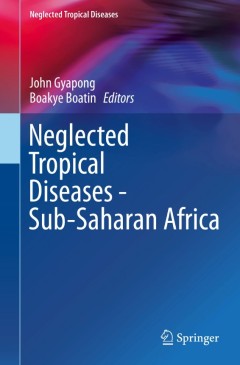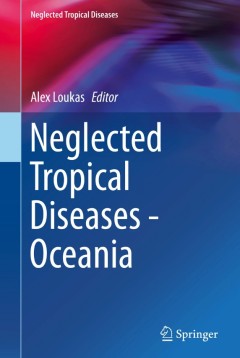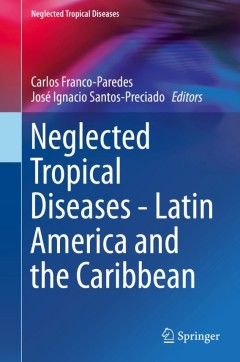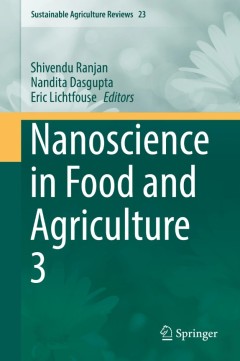Filter by

Encyclopedia of Metagenomics Genes, Genomes and Metagenomes. Basics, Methods…
Metagenomics has taken off as one of the major cutting-edge fields of research. The field has broad implications for human health and disease, animal production and environmental health. Metagenomics has opened up a wealth of data, tools, technologies and applications that allow us to access the majority of organisms that we still cannot access in pure culture (an estimated 99% of microbial lif…
- Edition
- -
- ISBN/ISSN
- 978-1-4899-7478-5
- Collation
- 39 b/w illustrations, 178 illustrations in colour
- Series Title
- -
- Call Number
- -

Their World: A Diversity of Microbial Environments
This volume summarizes recent advances in environmental microbiology by providing fascinating insights into the diversity of microbial life that exists on our planet. The first two chapters present theoretical perspectives that help to consolidate our understanding of evolution as an adaptive process by which the niche and habitat of each species develop in a manner that interconnects individua…
- Edition
- -
- ISBN/ISSN
- 978-3-319-28071-4
- Collation
- -
- Series Title
- -
- Call Number
- -

Neglected Tropical Diseases - Sub-Saharan Africa
This book provides an overview on the major neglected tropical diseases (NTDs) occurring in Sub-Saharan Africa, such as Leishmaniasis, Buruli Ulcer and Schistosomiasis. In well-structured chapters epidemiology and biology of these parasitic diseases will be discussed in detail. Further, diagnostics and therapeutic approaches as well as prevention strategies will be reviewed. The book will be of…
- Edition
- 1
- ISBN/ISSN
- 978-3-319-25469-2
- Collation
- XIV, 414
- Series Title
- Neglected Tropical Diseases
- Call Number
- -

Neglected Tropical Diseases - Oceania
This volume of the Neglected Tropical Diseases (NTD) series covers the most prevalent NTDs in Oceania. This book will discuss in detail pathology, diagnostics and control approaches of selected NTDs in the geographic region. A large part of Oceania’s population lives in poverty and therefore is at high risk for certain parasitic diseases, such as hookworm infection, lymphatic filariasis, stro…
- Edition
- 1
- ISBN/ISSN
- 2194-8275
- Collation
- V, 294
- Series Title
- Neglected Tropical Diseases
- Call Number
- -

Neglected Tropical Diseases - Latin America and the Caribbean
This book addresses the major neglected tropical diseases (NTDs) – based on their prevalence and the years of healthy life lost to disability – in Latin American and Caribbean countries. These include Chagas disease, leishmaniasis, hookworm infection, and other soil-transmitted helminth infections, followed by dengue, schistosomiasis, leishmaniasis, leprosy, cysticercosis, bartonellosis, Pl…
- Edition
- 1
- ISBN/ISSN
- 978-3-7091-1421-6
- Collation
- VIII, 243
- Series Title
- Neglected Tropical Diseases
- Call Number
- -

Nanoscience in Food and Agriculture 3
This book is the third volume on Nanoscience in Food and Agriculture, published in the Sustainable Agriculture Reviews series. In this book we present ten chapters describing the synthesis and application of nanomaterials for health, food, agriculture and bioremediation. Nanomaterials with unique properties are now being used to improve food and agricultural production. Research on nanomateria…
- Edition
- 1
- ISBN/ISSN
- 978-3-319-48008-4
- Collation
- XIII, 289
- Series Title
- Sustainable Agriculture Reviews
- Call Number
- -

Nanoscience in Food and Agriculture 2
This book is the second volume on this topic within the series. With unique properties, nanomaterials are rapidly finding novel applications in many fields such as food, medicine, agriculture and pollution. Such applications include to treat cancer, nanosensors to detect food contamination, nanomaterials for food packaging, nanoencapsulation to preserve nutraceuticals, and nanofertilisers for…
- Edition
- 1
- ISBN/ISSN
- 978-3-319-39305-6
- Collation
- XVII, 373
- Series Title
- Sustainable Agriculture Reviews
- Call Number
- -

Nanoscience in Food and Agriculture 1
Nanotechnology is a fast-evolving discipline that already produces outstanding basic knowledge and industrial applications for the benefit of society. Whereas the first applications of nanotechnology have been developed mainly in material sciences, applications in the agriculture and food sectors are still emerging. Due to a rapid population growth there is a need to produce food and beverages …
- Edition
- 1
- ISBN/ISSN
- 978-3-319-39302-5
- Collation
- XIX, 324
- Series Title
- Sustainable Agriculture Reviews
- Call Number
- -

The Th2 Type Immune Response in Health and Disease From Host Defense and All…
The type 2 immune response that develops during infectious disease has undergone major paradigm shifts in the last several years as new cell types and pathways have been identified. It is now clear that the type 2 immune response, characterized by elevations in specific cytokines, including IL-4, IL-5 and IL-13, is associated with helminth infections in both humans and mice. This response is co…
- Edition
- -
- ISBN/ISSN
- 978-1-4939-2911-5
- Collation
- -
- Series Title
- -
- Call Number
- -

Molecular Parasitology
In the past years, genome projects for numerous human parasites have been completed and now allow first in depth comparisons and evolutionary conclusions. The genomes of parasites reflect the coevolution with their host, metabolic capacities depending on their respective habitat in the host. Gut parasites usually have an anaerobic metabolism, while blood parasites have an aerobic metabolism, in…
- Edition
- 1
- ISBN/ISSN
- 978-3-7091-1415-5
- Collation
- IX, 547
- Series Title
- -
- Call Number
- -
 Computer Science, Information & General Works
Computer Science, Information & General Works  Philosophy & Psychology
Philosophy & Psychology  Religion
Religion  Social Sciences
Social Sciences  Language
Language  Pure Science
Pure Science  Applied Sciences
Applied Sciences  Art & Recreation
Art & Recreation  Literature
Literature  History & Geography
History & Geography